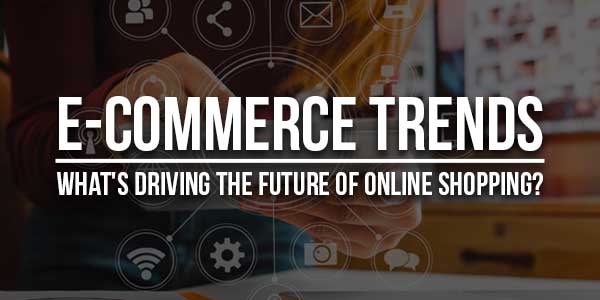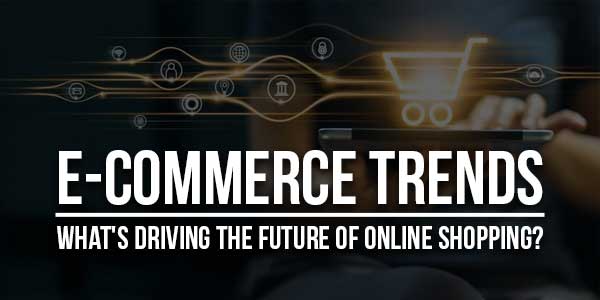
Over the past few years, the e-commerce industry has witnessed a spectacular transition. Online shopping has become a crucial aspect of our daily lives as technology develops. E-commerce platforms’ ease of use, accessibility, and variety have significantly changed customer behavior and preferences. This article will examine the most recent developments that are redefining the industry. It influences online buying and changes how customers engage with brands.
Table of Contents
The Dominance Of Mobile Commerce (M-Commerce):
M-commerce, often known as mobile commerce, is revolutionizing the e-commerce industry. The widespread adoption of smartphones and the constant connectivity they provide have opened up new opportunities to reach consumers. The convenience of shopping on the go has attracted a massive audience, leading to a surge in mobile sales.
According to recent studies, the majority of online purchases are now made through mobile devices. Retailers are optimizing their websites and apps for mobile responsiveness. It provides seamless user experiences and faster load times. Additionally, advancements in mobile payment technologies, such as digital wallets and mobile banking, have contributed to the growth of e-commerce.
Artificial Intelligence And Personalization:
Personalization has emerged as a crucial tactic for e-commerce companies. It is important to engage customers and increase sales in the era of data-driven marketing. The driving force behind this trend is artificial intelligence (AI), which enables businesses to analyze massive volumes of consumer data. It offers specialized product recommendations and individualized shopping experiences.
Customer service has been transformed by AI-powered chatbots and virtual assistants by providing real-time assistance and tailored solutions. E-commerce systems may anticipate customers’ demands by learning about their preferences and behavior, which increases customer satisfaction and loyalty.
Augmented Reality (AR) And Virtual Reality (VR) Shopping:
Augmented Reality (AR) and Virtual Reality (VR) have transcended the realm of gaming and entertainment to transform the online shopping experience. While VR creates immersive shopping environments that replicate brick-and-mortar establishments. AR enables customers to see things in their real environment using their smartphone or tablet cameras. It is important for digital marketing services.
In the fashion and home décor sectors, where buyers may digitally “try on” garments or examine how the furniture fits in their homes, these technologies have proven to be especially helpful. Customers’ confidence is increased and the risk of returns is decreased. When products can be interacted with in such a lifelike way, which benefits both consumers and retailers.
Smart Speakers And Voice Commerce:
Voice shopping, or v-commerce, was made possible by the emergence of smart speakers and voice assistants. These examples included Apple’s Siri, Google Assistant, and Amazon’s Alexa. Customers can now make purchases by simply speaking to their devices, making the shopping process more frictionless and hands-free.
As voice recognition technology continues to improve. More consumers are embracing v-commerce for tasks like product research, price comparisons, and order placements. E-commerce platforms are responding to this trend by making their websites voice search-friendly so that customers can find their products using voice commands.
Influencer Marketing And Social Commerce:
Social networking sites have developed into effective tools for e-commerce companies to connect with and engage with their target markets. Social commerce enables people to make purchases without ever leaving their favorite apps. It blends the purchasing experience into social media platforms.
Social commerce is significantly fueled by influencer marketing. Utilizing the trust and influence of social media influencers, brands work with them to promote their products to their followers. Through increased brand awareness and the ability to target niche markets, brands can enhance conversion rates.

Subscription-Based Services:
The subscription-based model has gained popularity in the e-commerce industry. It offers consumers access to exclusive products, services, or content for a recurring fee. Subscription services, like meal kits, beauty boxes, and streaming platforms, provide convenience and personalization. It is due to establishing a predictable revenue stream for businesses.
For customers, subscription-based services offer a hassle-free shopping experience, as products are delivered regularly without the need for repeat orders. This business model enhances customer retention and loyalty, ensuring a steady customer base for e-commerce companies.
Sustainable And Ethical Shopping:
Consumers are becoming more conscious of their environmental impact and are seeking products from companies that prioritize sustainability and ethical practices. E-commerce platforms are responding to this demand by offering eco-friendly products and promoting ethical sourcing and production methods.
Because consumers feel good about supporting companies that share their values. Brands that prioritize sustainability and social responsibility frequently gain a devoted following. To further reduce their environmental impact, e-commerce businesses are implementing eco-friendly packaging and carbon-neutral shipping choices. To avail of all these facilities digital marketing services.
One-Hour And Same-Day Delivery:
Higher expectations for delivery speed have been brought about by the growth of e-commerce. Due to this, same-day and one-hour delivery services are now necessary to maintain market competitiveness. To accommodate customer demand, retail behemoths, neighborhood businesses, and third-party logistics providers are investing in quick delivery options. To deliver all these services digital marketing services are very important.
Same-day delivery is particularly popular for groceries, perishable goods, and last-minute purchases. The examination of delivery options using drones and autonomous vehicles has also been motivated by the desire for extremely quick delivery. It also provides potentially revolutionizing the logistics sector.
Social Proof And User-Generated Content (UGC):
Consumers increasingly rely on reviews, ratings, and UGC to make informed purchasing decisions. E-commerce platforms are leveraging this trend by incorporating customer reviews and social media posts into their product pages, fostering trust and credibility.
Data Analytics And Machine Learning:
The use of big data analytics and machine learning is empowering e-commerce businesses to gain deeper insights into consumer behavior and preferences. This data-driven approach enables targeted marketing, personalized recommendations, and more effective inventory management, optimizing the overall shopping experience.
Conclusion:
Changing consumer preferences along with technical improvements will determine how online shopping develops in the future. The important trends advancing the e-commerce sector are customization, augmented reality, voice commerce, social commerce, sustainable practices, and mobile commerce.
As technology continues to evolve and consumer behavior adapts, e-commerce businesses must stay agile and embrace innovation to remain competitive. By understanding and leveraging these trends. Online retailers can create unique and engaging shopping experiences that delight customers and drive long-term success in the digital marketplace.

 About the Author:Abdul Moiz works as a blogger full-time. He is a keynote speaker on social media strategy, an author for Orchidia’s
About the Author:Abdul Moiz works as a blogger full-time. He is a keynote speaker on social media strategy, an author for Orchidia’s 
















“Your article is truly impressive! Your writing style is engaging and easy to follow, making it a pleasure to read. The depth of research and information you’ve provided is commendable, and it’s evident that you’ve put a lot of thought and effort into crafting this piece. Whether it’s a topic related to technology, or any other category, your ability to convey ideas effectively shines through. Keep up the fantastic work, and I look forward to reading more from you in the future!”
Welcome here and thanks for reading our article and sharing your view. This will be very helpful to us to let us motivate to provide you with more awesome and valuable content from a different mind. Thanks again.